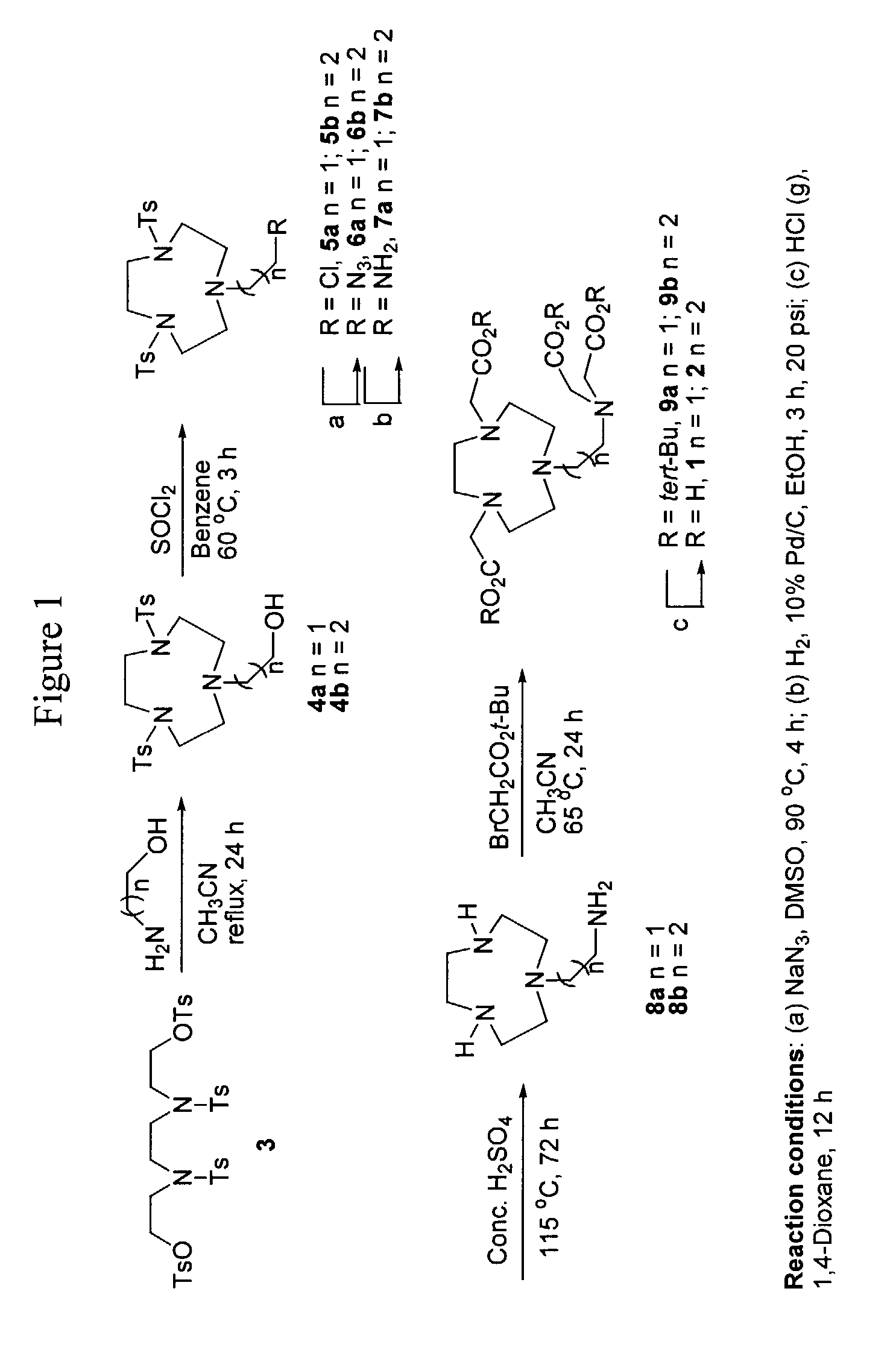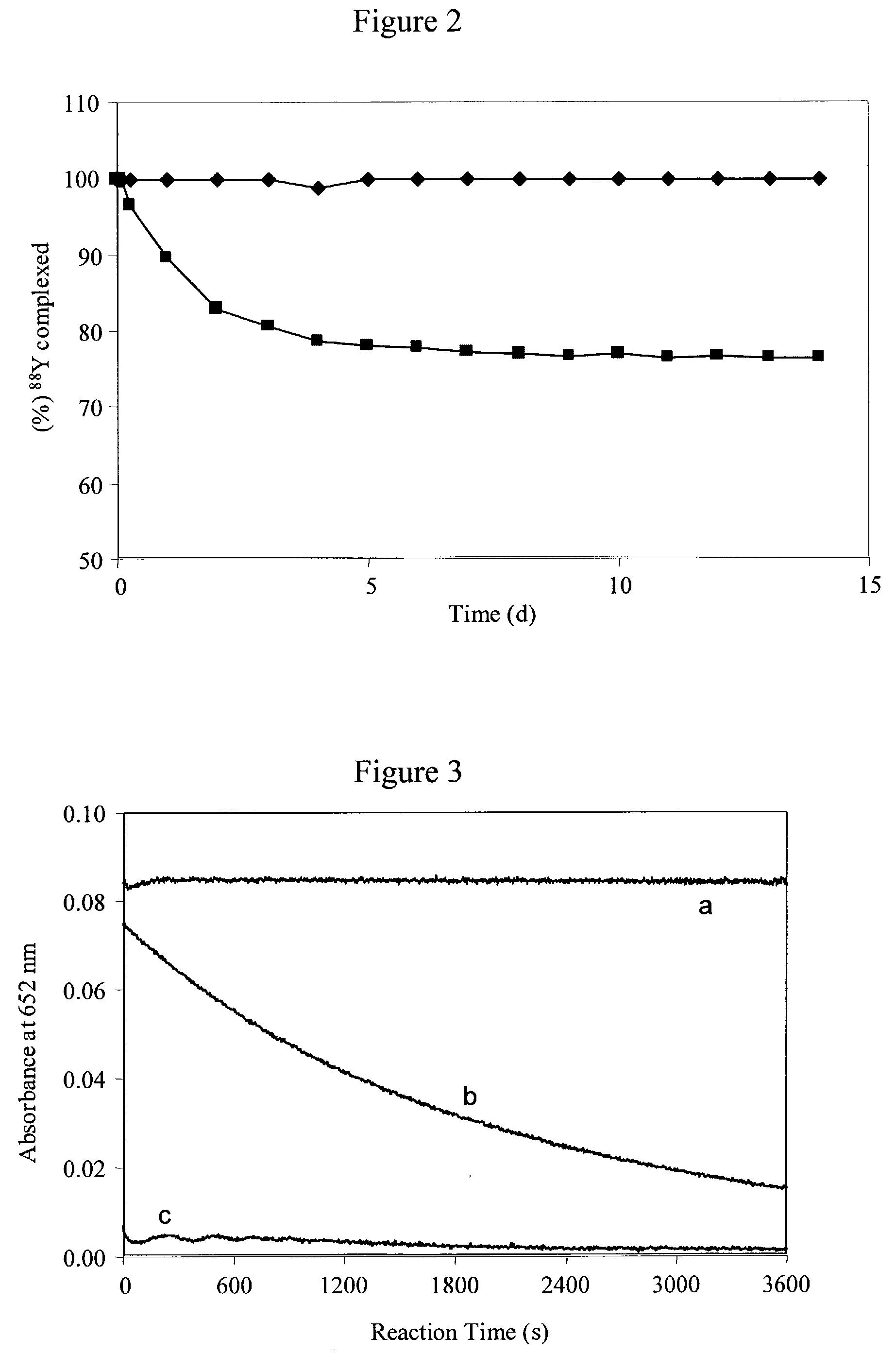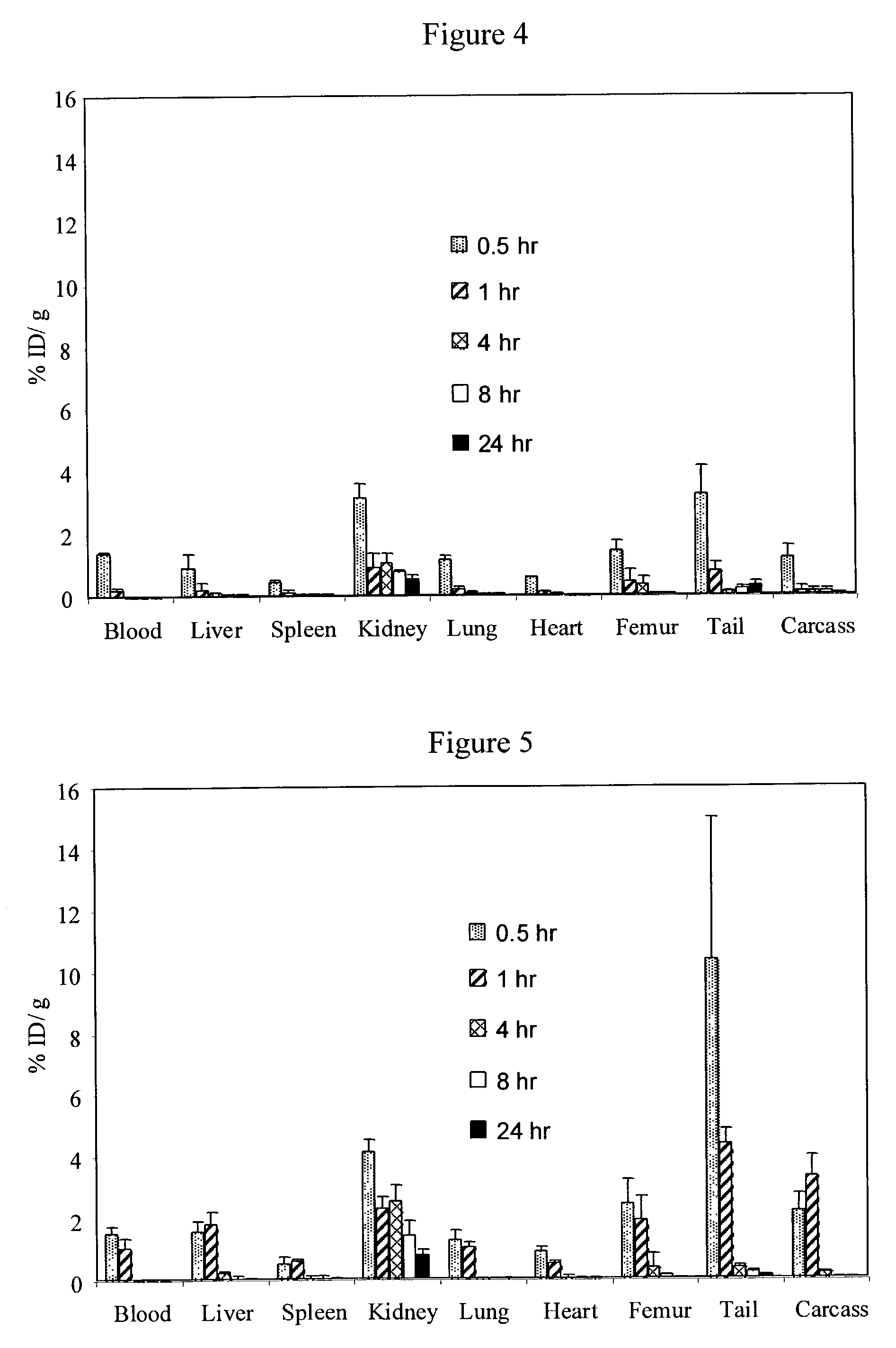Scorpionate-like pendant macrocyclic ligands, complexes and compositions thereof, and methods of using same
a macrocyclic ligand and scorpionate technology, applied in the field of substituting 1, 4, 7triazacyclononanen, n′, n′′triacetic acid compounds, can solve the problems of limiting the routine use of rit applications, slow formation rate of complexes, and inability to meet the requirements of rit applications, so as to achieve a high level of complex stability and accelerate the complexation with metal
- Summary
- Abstract
- Description
- Claims
- Application Information
AI Technical Summary
Benefits of technology
Problems solved by technology
Method used
Image
Examples
example 1
[0075]This example describes a general procedure for synthesis of macrocyclics 4a and 4b (FIG. 1).
[0076]To a solution of 3 (1 mmol); (Nicolas et al., J. Labelled Comp. Radiopharm., 2000, 43, 585–594) and Na2CO3 (10 mmol) in CH3CN (10 mL) under argon was added either ethanolamine or propanolamine (1 mmol), and the resulting mixture was heated to reflux for 24 h. The reaction mixture was allowed to cool gradually to ambient temperature, filtered, and the filtrate was concentrated in vacuo.
example 2
[0077]This example describes the purification of 2-[-4,7-bis-(p-toluene-4-sulfonyl)-[1,4,7]triazacyclononan-1-yl]-ethanol (4a) (FIG. 1).
[0078]The residue from Example 1 was purified via column chromatography on silica gel eluting with ethyl acetate (EtOAc). Pure 4a (414 mg, 86%) was thereby obtained as a colorless oil: 1H NMR (CDCl3) δ 2.03 (s, 1 H), 2.40 (s, 6 H), 2,79 (t, JAB=3.2 Hz, 2 H), 3.01 (t, JAB=3.8 Hz, 4 H), 3.26 (t, JAB=3.6 Hz, 4 H), 3.44 (t, JAB=1.8 Hz, 4 H), 3.61 (t, JAB=2.7 Hz, 2 H), 7.31 (AB, JAB=9.1 Hz, 4 H), 7.67 (AB, JAB=9.1 Hz, 4 H); 13C NMR (CDCl3) δ 21.2 (q), 52.3 (t), 52.7 (t), 54.9 (t), 59.3 (t), 59.9 (t), 126.8 (d), 129.5 (d), 134.8 (s), 143.2 (s). Anal. Calcd for C22H31N3S2O5: C, 54.86; H, 6.49. Found: C, 54.51; H, 6.64.
example 3
[0079]This example describes the purification of 3-[-4,7-bis-(p-toluene-4-sulfonyl)-[1,4,7]triazacyclononan-1-yl]-propan-1-ol (4b) (FIG. 1).
[0080]The residue from Example 1 was purified via column chromatography on silica gel eluting with EtOAc. Pure 4b (454 mg, 92%) was thereby obtained as a colorless oil: 1H NMR (CDCl3) δ 1.78 (t, JAB=3.5 Hz, 2 H), 2.13 (s, 1 H), 2.50 (s, 6 H), 2.87 (t, JAB=3.3 Hz, 2 H), 3.04–3.12 (m, 4 H), 3.26–3.41 (m, 4 H), 3.50 (s, 2 H), 3.87 (t, JAB=2.9 Hz, 4 H), 7.40 (AB, JAB=8.7 Hz, 4 H), 7.41 (AB, JAB=8.7 Hz, 4 H); 13C NMR (CDCl3) δ 21.4 (q), 29.5 (t), 51.5 (t), 52.8 (t), 54.4 (t), 54.7 (t), 61.5 (t), 127.0 (d), 129.7 (d), 135.0 (s), 143.5 (s). Anal. Calcd for C23H33N3S2O5: C, 55.74; H, 6.71. Found: C, 55.87; H, 6.84.
PUM
| Property | Measurement | Unit |
|---|---|---|
| pH | aaaaa | aaaaa |
| half life | aaaaa | aaaaa |
| half life | aaaaa | aaaaa |
Abstract
Description
Claims
Application Information
 Login to View More
Login to View More - R&D
- Intellectual Property
- Life Sciences
- Materials
- Tech Scout
- Unparalleled Data Quality
- Higher Quality Content
- 60% Fewer Hallucinations
Browse by: Latest US Patents, China's latest patents, Technical Efficacy Thesaurus, Application Domain, Technology Topic, Popular Technical Reports.
© 2025 PatSnap. All rights reserved.Legal|Privacy policy|Modern Slavery Act Transparency Statement|Sitemap|About US| Contact US: help@patsnap.com



